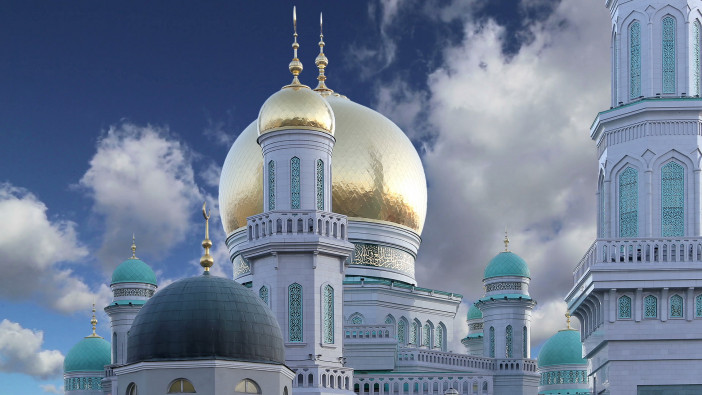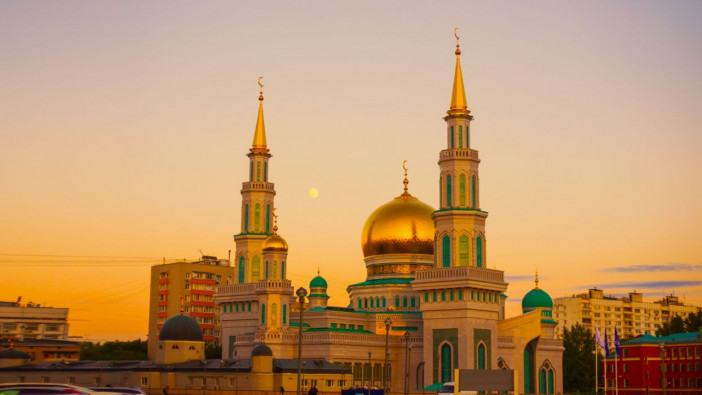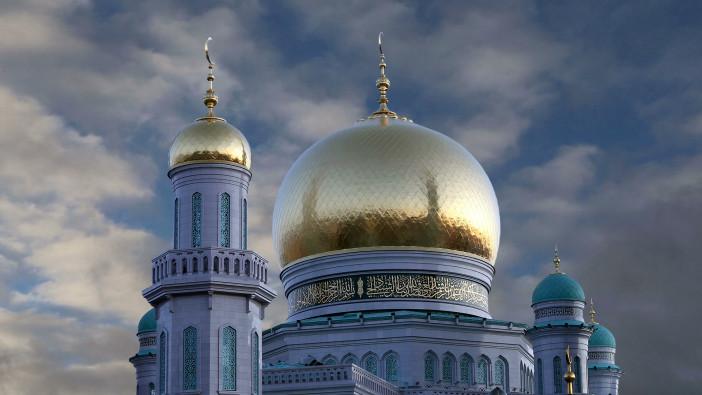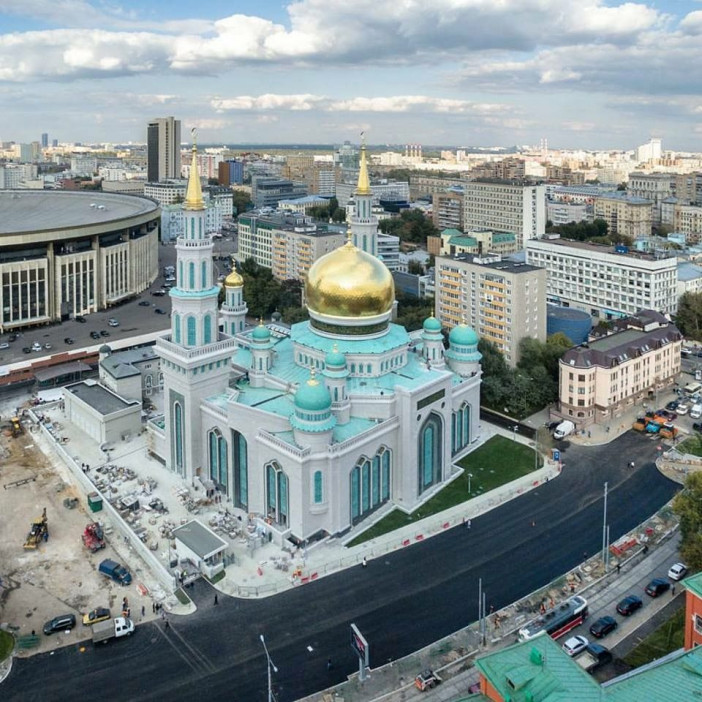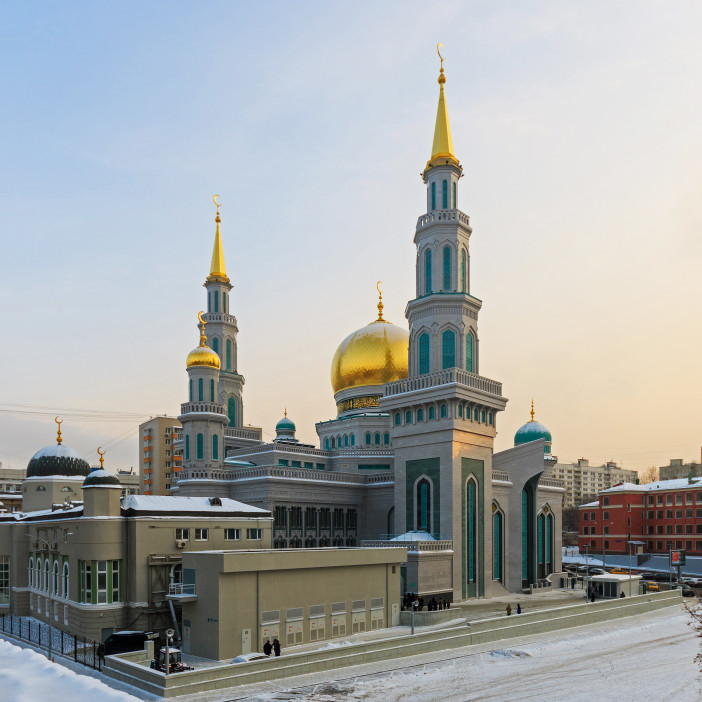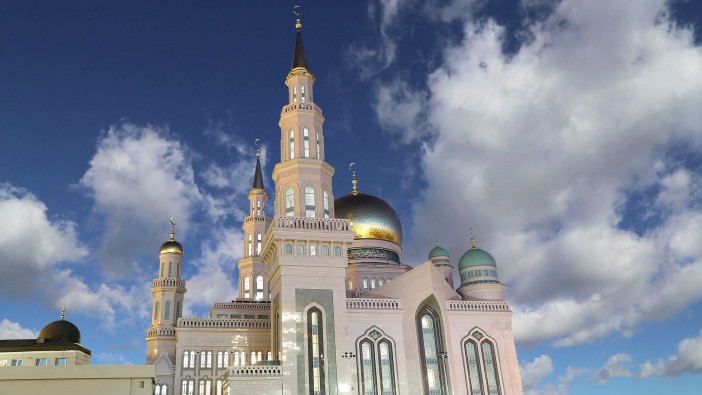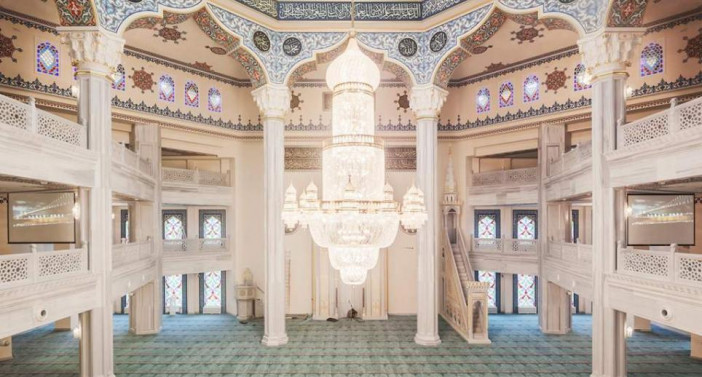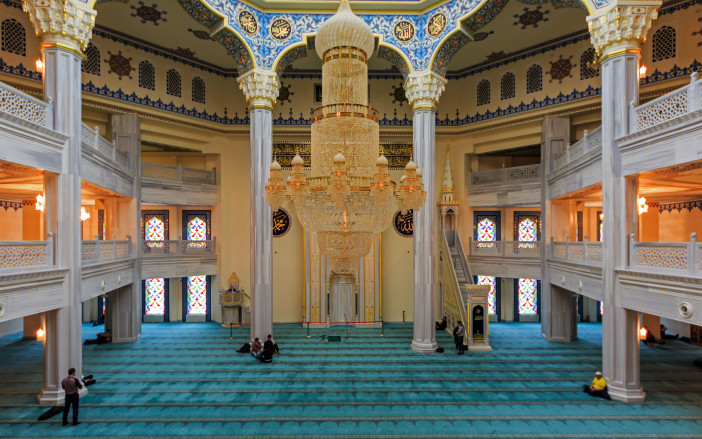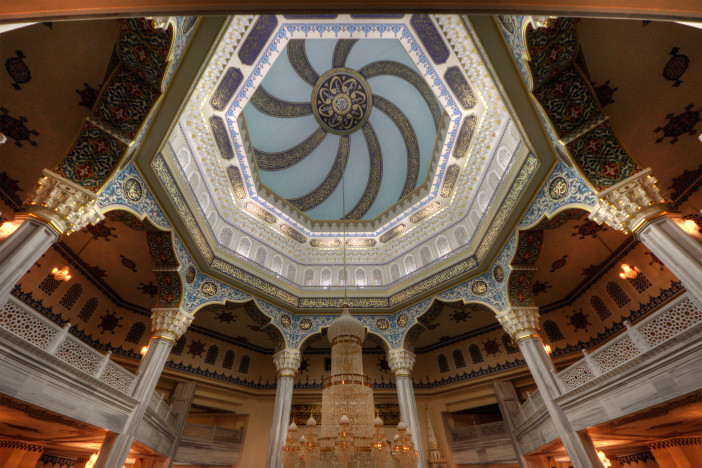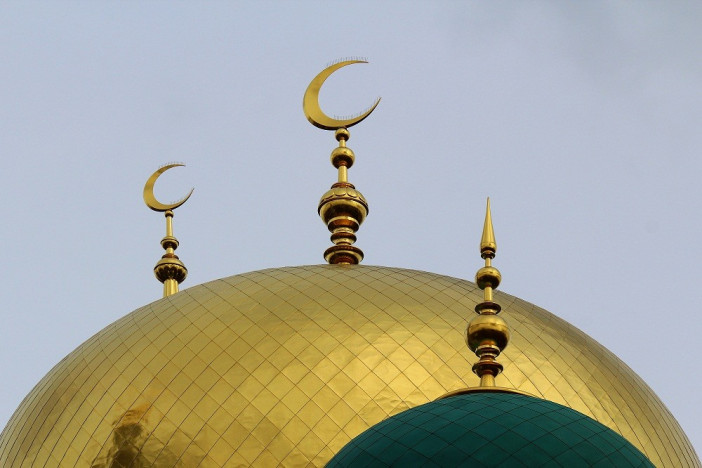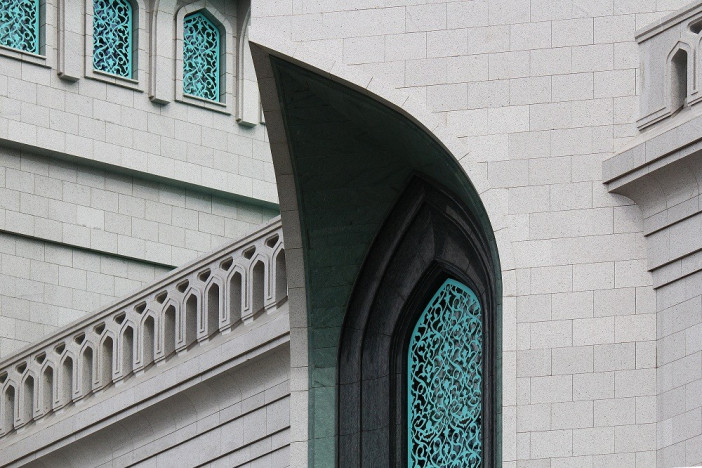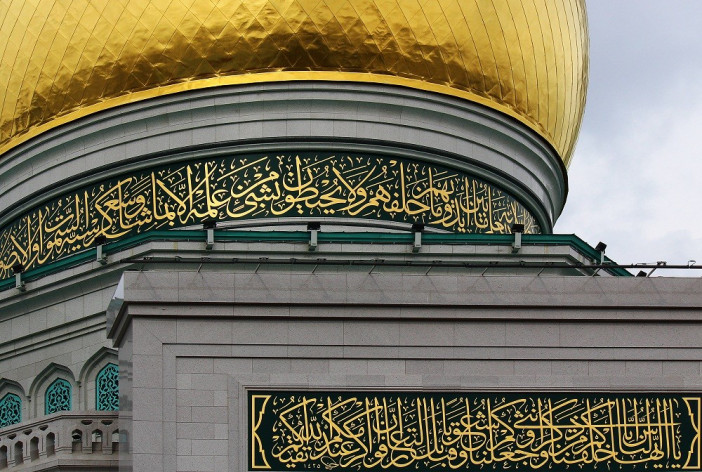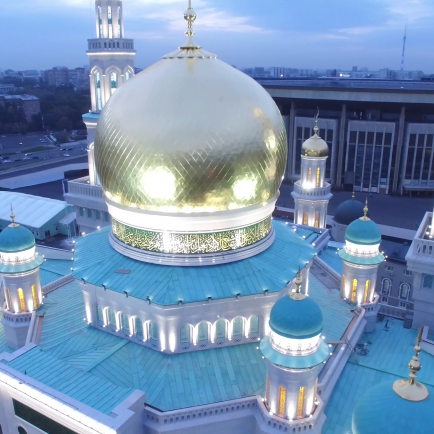Moscow Central Mosque
History
The Moscow Central Mosque also known as( Moscow Cathedral Mosque ) today impresses with its magnificence. Its history starts with the year 1904. That's when the first cathedral mosque was built in Moscow. A Moscow architect Nikolay Zhukov developed the project, and the famous Tatar merchant Salih Erzin became the patron. In the era of the Soviet Union, it was the only mosque in the city, which was not closed and held worship services. However, in the year 2005 it was decided to renovate, and in 2011 construction began on the new mosque, designed by architects Ilias Tažieva and Alexei Kolenteeva.
Description
In the architectural ensemble of the new Cathedral Mosque in
Moscow you will notice several historical and cultural throwbacks. So, for
example, the two main minarets are taller than 70 m (230 ft.) and very similar
in shape to the famous leaning tower of the Kazan Kremlin (Söyembikä) and to
the Spasskuû Tower of the Moscow Kremlin.
This idea is a symbol of unity and friendship of the Russian and
Tatar peoples. A huge 46-metre golden dome mosque, on whose cover together with
minarets took about 12 tons of gold leaf, which echoes the way Orthodox
"golden-domed Moscow". Do not forget to pay tribute to the architects
and the original appearance of the mosques: old walls have been collected anew,
they successfully fit in with new interior, while retaining the old look, and
on top of one of the minarets was placed a Crescent, which adorned the old
building.
The new mosque has traits of a Byzantine style, this 6-storey
building is crowned with a few different sizes of minarets, domes and towers.
Compared to the original building, the area of the new mosque has almost 20
times as much space and amounted to 18900 sq. m. Prayer rooms for men and women
now accommodate about 10,000 people.
In addition, there are rooms in the mosque, where the ritual
ablution, a large hall for imams, traditional ceremonies: five times daily,
Friday, and holiday prayers, Nikah, janaza (funeral prayer) and the naming of
children.
Numerous patterns and decorative elements meet the
traditions of Muslim architecture, colors used in classic designs for Islam
such as emerald, green, blue and white. On the inside of the dome, the walls
and ceiling of the mosque are paintings representing the sacred verses from the
Koran, made by Turkish masters.
More than 320 fixtures placed on the walls and ceiling are used to
illuminate the mosques. Most of them repeat the shape of the main dome of the
mosque on a different scale. The Central chandelier in the main hall is a giant
lamp 8 m tall and weighs 1.5 tons. On its creation worked fifty Turkish masters
over three months.
References
https://en.wikipedia.org/wiki/Moscow_Cathedral_Mosque
https://voschod.ru/en/recreations/moscow-cathedral-mosque
Details
Location
Russia, Moscow
Worshippers
10000
Year of Build
2015
Area
18900 sq. m
Drawings
Map
History
The Moscow Central Mosque also known as( Moscow Cathedral Mosque ) today impresses with its magnificence. Its history starts with the year 1904. That's when the first cathedral mosque was built in Moscow. A Moscow architect Nikolay Zhukov developed the project, and the famous Tatar merchant Salih Erzin became the patron. In the era of the Soviet Union, it was the only mosque in the city, which was not closed and held worship services. However, in the year 2005 it was decided to renovate, and in 2011 construction began on the new mosque, designed by architects Ilias Tažieva and Alexei Kolenteeva.
Description
In the architectural ensemble of the new Cathedral Mosque in
Moscow you will notice several historical and cultural throwbacks. So, for
example, the two main minarets are taller than 70 m (230 ft.) and very similar
in shape to the famous leaning tower of the Kazan Kremlin (Söyembikä) and to
the Spasskuû Tower of the Moscow Kremlin.
This idea is a symbol of unity and friendship of the Russian and
Tatar peoples. A huge 46-metre golden dome mosque, on whose cover together with
minarets took about 12 tons of gold leaf, which echoes the way Orthodox
"golden-domed Moscow". Do not forget to pay tribute to the architects
and the original appearance of the mosques: old walls have been collected anew,
they successfully fit in with new interior, while retaining the old look, and
on top of one of the minarets was placed a Crescent, which adorned the old
building.
The new mosque has traits of a Byzantine style, this 6-storey
building is crowned with a few different sizes of minarets, domes and towers.
Compared to the original building, the area of the new mosque has almost 20
times as much space and amounted to 18900 sq. m. Prayer rooms for men and women
now accommodate about 10,000 people.
In addition, there are rooms in the mosque, where the ritual
ablution, a large hall for imams, traditional ceremonies: five times daily,
Friday, and holiday prayers, Nikah, janaza (funeral prayer) and the naming of
children.
Numerous patterns and decorative elements meet the
traditions of Muslim architecture, colors used in classic designs for Islam
such as emerald, green, blue and white. On the inside of the dome, the walls
and ceiling of the mosque are paintings representing the sacred verses from the
Koran, made by Turkish masters.
More than 320 fixtures placed on the walls and ceiling are used to
illuminate the mosques. Most of them repeat the shape of the main dome of the
mosque on a different scale. The Central chandelier in the main hall is a giant
lamp 8 m tall and weighs 1.5 tons. On its creation worked fifty Turkish masters
over three months.


